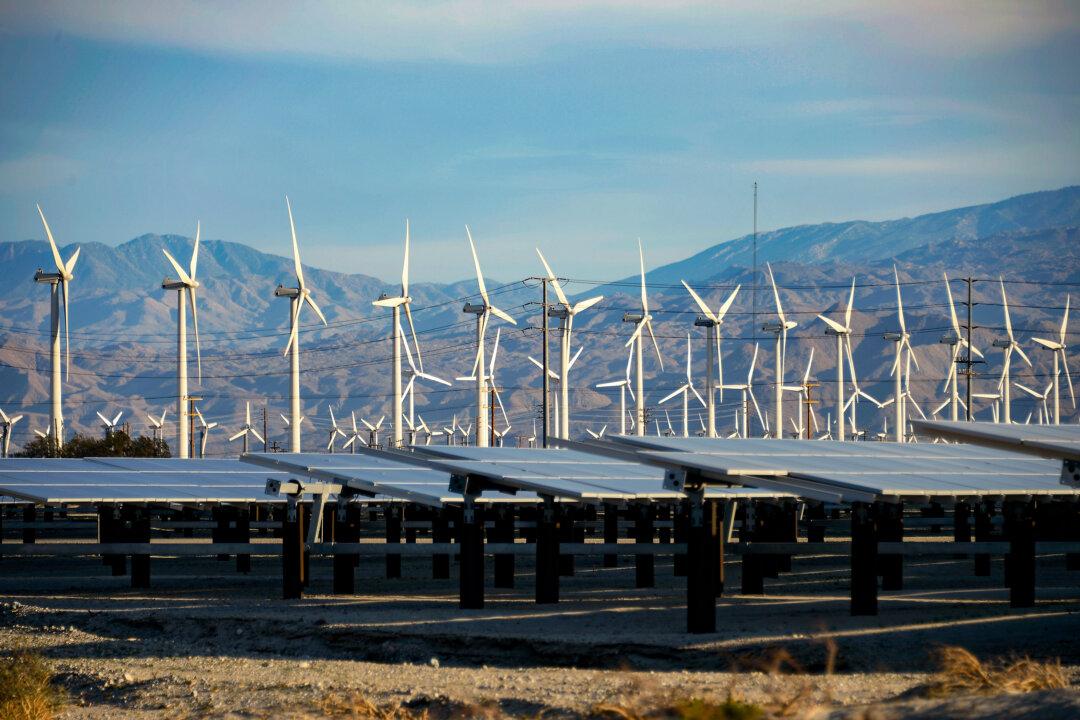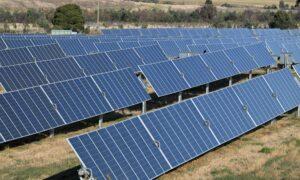The push to find alternatives to China-based sources of silicon has gathered force in recent months both in the United States and in the European Union (EU). Widespread concern about the humanitarian and geopolitical implications of doing business with Chinese state-controlled exporters has fueled a backlash and a campaign to re-shore solar panel production.
The EU is desperate for ways to curb its heavy dependence on Chinese silicon imports for use in the construction of solar panels that figure prominently in its vision of a green energy future. However, Western nations still face a severe disadvantage when it comes to competing with China—namely, the cost of energy.
“It requires very high heat to produce the solar panels, to make the polycrystal and silicon. It’s almost the same process as making semiconductors. You need really high heat to form the silicon during the process, and that’s where China, with cheap energy, can drive down the costs. They have economies of scale,” Alexander Stevens, manager of policy and communications at the Washington-based Institute for Energy Research, told The Epoch Times.
Hence, the energy sectors of Western nations stand at a crossroads, with significant domestic capability offset by crippling regulations and a lack of competitiveness in terms of affordable energy. Energy costs account for roughly 40 percent of the cost of solar panels.
“The technological progress in this field is very slow. The easy innovations have been sussed out, and the substantive improvements in technology are harder and harder won,” Mr. Stevens said.
While it isn’t hard to mine and process silicon, China has pioneered economies of scale to generate high heat efficiently and make solar panels cheaply. Mining silicon in Europe isn’t the challenge, but China’s low-cost energy makes it hard to compete with on this front, Mr. Stevens said.
China’s energy sector miners, producers, and exporters enjoy lavish subsidies, make shrewd use of cheap energy, and operate largely free of the environmental regulations that hamper energy independence in Western nations. Those regulations are so cumbersome and poorly thought out that they make realizing energy independence in the foreseeable future a tall order, energy sector analysts have told The Epoch Times.
In the United States, generating industrial heat to manufacture silicon solar panels is a process that relies heavily on coal and natural gas, Mr. Stevens noted.
Tentative Steps
On Feb. 15, the U.S. House of Representatives passed H.R. 7176, the Unlocking Our Domestic LNG Potential Act of 2024, on a vote of 224–200, giving a measure of hope to advocates of energy independence.Among other provisions, the act clarifies some of the language in the Natural Gas Act (15 U.S.C. 717b), setting forth revised criteria for Federal Energy Regulatory Commission (FERC) approval of the siting, expansion, and operation of liquefied natural gas (LNG) facilities. FERC will grant approval when it meets reasonable standards of serving the public interest.
For some, the vote on H.R. 7176 is a victory for the U.S. energy sector and for producers and distributors that hope to be more competitive with their rivals in China.
The vote comes just weeks after four U.S. senators—Marco Rubio (R-Fla.), Sherrod Brown (D-Ohio), Jon Ossoff (D-Ga.), and Raphael Warnock (D-Ga.)—on Jan. 30 urged President Joe Biden to raise tariffs on imports from China used in solar panel production.
The four lawmakers specifically identified solar panel production as an area in which China’s subsidies of its domestic industry give Chinese firms an advantage over U.S. manufacturers and distributors. They noted that in 2023, the price of manufacturing a solar panel in China fell to $0.15 per watt. That’s more than 60 percent less than the equivalent cost in the United States.
“By 2026, China will have enough capacity to meet annual global demand for the next 10 years. This capacity is an existential threat to the U.S. solar industry and American energy security,” the senators wrote.
For U.S. companies seeking to compete with Chinese players, wide aversion to fossil fuels makes a tough situation worse.
The steel used to make support towers for wind turbines, and the cement used to build dams for hydropower, require carbon-intensive processes, Mr. Stevens said, and about 20 percent of the world’s coal goes toward the production of steel.
“All those things require some kind of high-temperature industrial process, which is usually done with your basic combustive fuels, fossil fuels. Nuclear can also be used, but we don’t do that currently,” he said.
Hence, at the present juncture, any realistic plan for ramping up domestic energy production and escaping the trap of reliance on China-based supply chains comes up against what are currently steep political obstacles.
The European Commission’s finance minister, Mairead McGuinness, earlier this month praised what she views as the EU’s significant progress in the implementation of solar power. Solar power accounted for 8 percent of all energy produced in the EU last year, she said.
“The supply of the EU market is highly dependent on imports, as more than 97 percent of solar panels deployed in Europe are imported, mainly from China,” Ms. McGuinness stated.
She and other European ministers and industry leaders are not happy about an arrangement that advances green energy by enriching state-owned firms in a nation with one of the most problematic human rights records on Earth. But unless regulations in Western nations change markedly, this dominance is not about to subside, energy experts say.

Regulations Abet Beijing
The EU’s new target of bringing 30 gigawatts of solar-manufacturing ability back within its borders by 2023 and producing energy largely independently of China or any other foreign power is unrealistic, Mr. Stevens told The Epoch Times. Miners, manufacturers, and exporters based in China are unlikely to lose their dominant position if current legal and regulatory frameworks remain in force, he believes.“Sadly, that’s going to be really difficult because China is the largest producer of silicon. They produce 6 million metric tons of it per year, and the whole world produces only 8.8 million metric tons,” he said.
The Chinese silicon industry benefits from looser environmental controls and an abundance of cheap electricity, Mr. Stevens said. With an organized effort, the United States and European Union might compete more effectively, he said. But at present, their environmental goals get in the way of supply chain diversification.
Mr. Stevens sees this issue as hampering initiatives in both the United States and Europe.
Over the past decade, U.S. silicon production rose fairly consistently, hitting a peak in 2018, then began to drop off sharply in 2019. U.S. production of 265,000 metric tons of silicon in 2022 marks a significant drop from that record high of 430,000 metric tons in 2018, Mr. Stevens noted.
While a number of factors limit efficient energy production in the United States, Mr. Stevens singled out for criticism a permitting process in which it can easily take 10 years or longer from the discovery of deposits in the ground to having a fully licensed, up-and-running mine.
“Mining is not going to be taking off anytime soon unless there are significant reforms to the permitting process here in the United States,” Mr. Stevens said.
In many jurisdictions, reticence persists around giving a green light to mining ventures. This is a chronic hindrance to the extraction of silicon at a pace and in a manner that might make Western countries more competitive with, and less dependent on, China.
For all the moral and geopolitical concerns that dependence on Chinese supply chains raises, nations critical of Beijing and its human rights record have failed to learn the lesson.
“In Norway, France, and other countries of Europe, they have similar issues. Mostly, their environmental regulations and their high energy prices are preventing them from producing it economically. Mining, or any sort of development and manufacturing in Europe right now, it’s just a non-starter,” Mr. Stevens said.
“So, if they’re looking for someplace other than China to be able to do this, it’s probably not going to happen.”
The unwillingness to take steps to grow domestic energy capability is prevalent throughout much of the EU, concurs Brent Bennett, policy director at Life: Powered, an initiative of the Texas Public Policy Foundation that analyzes energy issues and markets.
“The thing that would make the EU less dependent on China would be to develop its own natural gas resources,“ he told The Epoch Times. ”They just haven’t done a lot of exploration for it. For the most part, you can’t frack in Europe, regulations say you can’t do it.”







